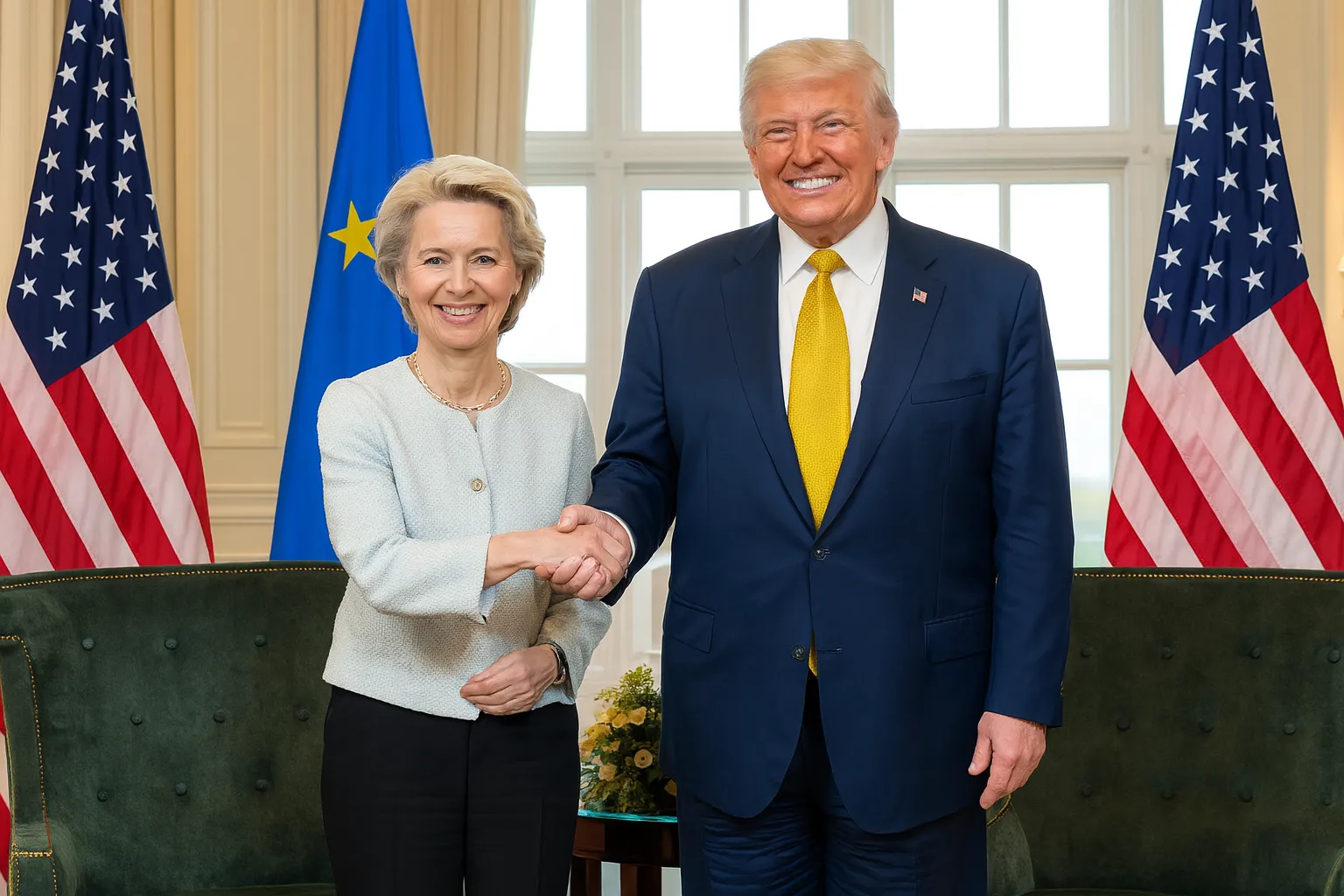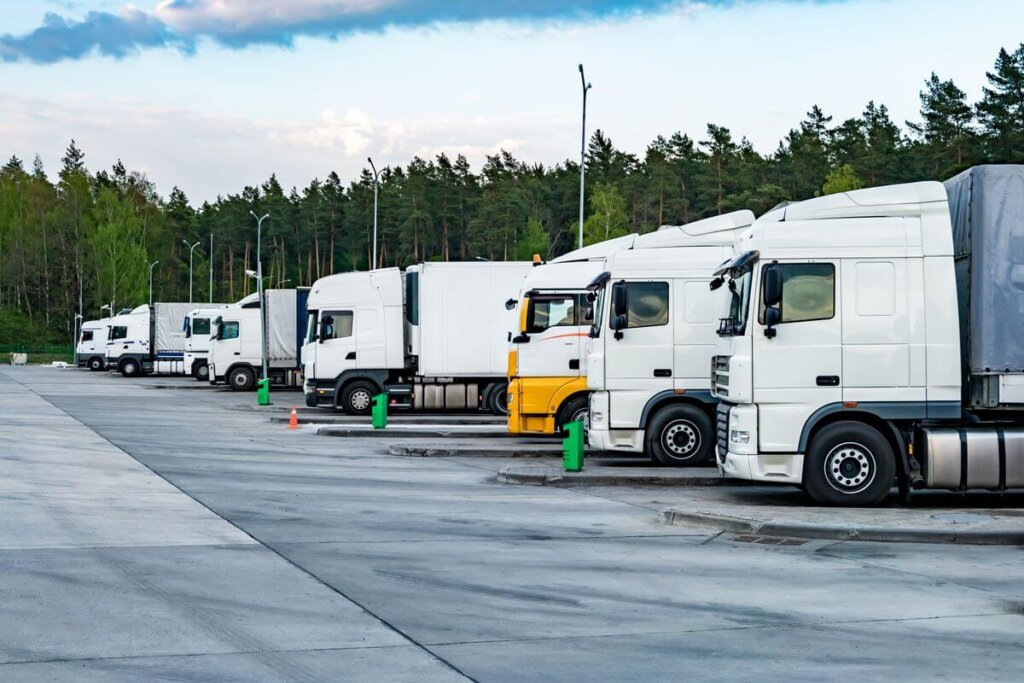The deal was finalised following a face-to-face meeting between US President Donald Trump and European Commission President Ursula von der Leyen at Trump’s Turnberry golf resort in Scotland on Sunday, 27 July. Both leaders hailed the agreement as a step towards stability, although the deal falls short of the EU’s initial goal of tariff-free trade.
“This is the biggest deal ever made,” said President Trump during a press conference after the meeting, claiming the EU would invest around $600 billion in the US and significantly increase its purchases of American energy and military equipment.
Von der Leyen described Trump as a “tough negotiator” and told reporters that the 15% tariff was “the best we could get”.
“Today’s deal creates certainty in uncertain times. It delivers stability and predictability for citizens and businesses on both sides of the Atlantic,” she added.
15% tariff to apply to most EU exports, including cars and pharmaceuticals
Under the terms of the agreement, most EU exports to the US, including cars, pharmaceuticals, and semiconductors, will be subject to a 15% tariff, according to a White House official cited by the BBC. This is a reduction from the 30% tariff that Trump had threatened to impose starting in August. However, the new rate remains substantially higher than the average 2% tariff that applied prior to Trump’s trade measures, and falls well short of the zero-for-zero tariff deal that EU negotiators had originally hoped to secure.
Some goods are exempt from the tariffs.
“There will be no tariffs from either side on aircraft and aircraft parts, certain chemicals, certain generic drugs, semiconductor equipment, some agricultural products, natural resources and critical raw materials,” von der Leyen explained.
Discussions are still ongoing regarding tariffs on alcohol, with countries such as France and the Netherlands pushing for exemptions on wine and beer.
The 50% tariff on steel and aluminium imports from the EU remains in place, although von der Leyen has suggested that these could be replaced with a quota system. A senior US official confirmed that the matter would be subject to further negotiations.
EU pledges $600bn energy shift to US and will accept American car safety standards
As part of the agreement, the EU has pledged to make significant investments in the US. Trump cited forthcoming energy and defence purchases totalling $750 billion as central components of the deal.
Von der Leyen said the EU would “replace Russian gas and oil with significant purchases of US LNG, oil and nuclear fuels”.
The European Commission has also committed to lowering non-tariff barriers, including regulatory changes to accept US auto safety standards, allowing American vehicles to be sold directly into EU markets.
According to the BBC, there will also be reforms to EU agricultural regulations to enable greater access for US farm produce, though specifics have yet to be confirmed.
According to information available at the time of writing, the agreement does not include any corresponding US commitments to invest in the European Union.
In case you missed it: Haulier with 158 years of history destroyed by cyberattack
“Imbalanced” deal may hurt EU interests, warns trade committee chair
Initial reactions from European leaders have been cautiously positive. German Chancellor Friedrich Merz welcomed the deal, stating it had helped avert a damaging trade conflict that would have hit Germany’s export-heavy economy, particularly its automotive sector.
Italian Prime Minister Giorgia Meloni and Irish Taoiseach Micheál Martin both acknowledged the stabilising effect of the agreement, while noting that it would make trade more expensive than before.
However, some European officials remain critical. Bernd Lange, Chair of the European Parliament’s trade committee, said the tariffs were “imbalanced” and warned that the scale of EU investment commitments could come at the expense of internal EU priorities.
Carsten Nickel of Teneo, speaking to Reuters, described the deal as “merely a high-level, political agreement” that leaves room for divergent interpretations.
“This, in turn, creates the risk of different interpretations along the way, as seen immediately after the conclusion of the US-Japan deal,” he added.
Stoxx 600 up 1% as investors welcome end of tariff uncertainty
Markets responded positively to news of the agreement. The Financial Times reported that the Stoxx Europe 600 index rose by 1% in early trading on Monday, with Germany’s DAX up 0.9% and France’s CAC 40 gaining 1.2%. US markets also looked set to open higher, with S&P 500 futures climbing 0.5%. The euro appreciated slightly against major currencies in the hour following the announcement.
While Trump presented the deal as a major economic win for the US, claiming it would bring in “hundreds of billions of dollars” in revenue, the BBC noted that precise details on the timing and nature of the EU’s investment pledges remain unclear.
Speaking to the Financial Times, ING’s global head of macro Carsten Brzeski said the deal removed “the uncertainty of recent months”, which had threatened to escalate into a broader trade conflict. Mitul Kotecha of Barclays, meanwhile, cautioned that for the EU, the agreement might “seem like a bit of a capitulation”.
In case you missed it: Need EV chargers at your depot? Don’t miss this £1 million EV charging grant









